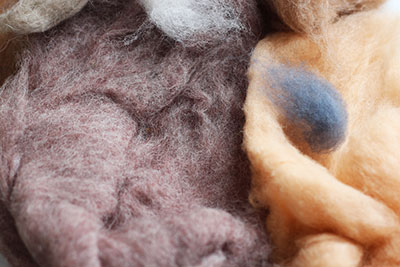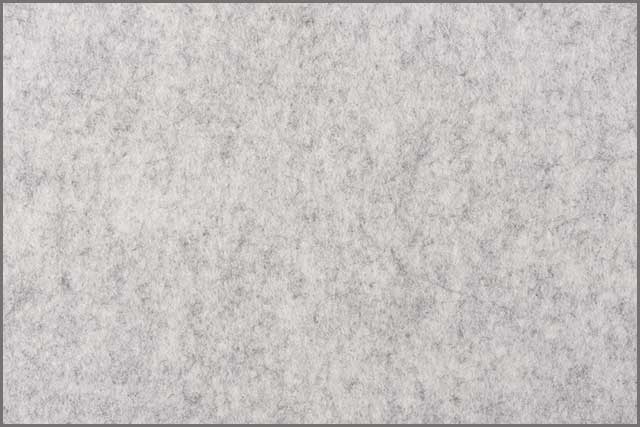The chances are you used wool felt products at least once. Whether you had felt toys, played on an instrument, or wore a hat, you were in touch with this fabric at some point.
We all know that felt is popular, but do you know anything about its history? Here is an excellent opportunity to find out more about the origin of felting, famous landmarks for its history, and today’s uses.
Table of Contents
- Chapter 1.The Characteristics And Meaning of Wool Felt
- Chapter 2. Where is The Origin of Wool Felt?
- Chapter 3. How is Wool Felt Developed in Europe?
- Chapter 4.What About the Development of Wool Felt in Modern Times?
- Chapter 5. How to Make Wool Felt?
- Summary

Chapter 1.The Characteristics And Meaning of Wool Felt

Wool felt is a natural textile made out of yarn. Although you can use other animals, we use sheep hair as the primary source of wool fibers to make felt.
Felt fabric is very durable and versatile. It is an excellent insulator and has admirable wind and water resistance. Its durability comes from the fact that it won’t fray. Wool felt is also exceptionally soft and light, which makes it suitable for various applications.
Chapter 2. Where is The Origin of Wool Felt?

It is hard to pinpoint the exact place where wool felt originated. However, you can find some interesting stories regarding its origin. According to a Sumerian legend, Umamman of Lagash found the felt-making secret.
In a story involving Saint Christopher and Saint Clement, men put wool in their sandals to protect their feet from blisters. As they were escaping persecution, they moved in those sandals. The sweat, heat, and movement made felt socks out of wool on their shoes.
When it comes to history, it is undeniable that felt was a primary textile for Eurasian nomads. They even lived in tents made of felting and wooden frameworks. In Mongolia, the Western world knows them as yurts, the Turkish variation of their name.
The great thing about yurts is that you can quickly set them up and unmount them. That was important for nomads because they could use yaks and camels to move their tents to any location. Other products they made using felt include boots, clothing, blankets, carpets, toys, etc. You can see nomads selling felt goods even today. In Central Asia, you will see them selling these goods to tourists.
It is interesting to mention the technique nomads use for making felt. They spread wool fibers on yak skin using the wetting technique to make felt. Nomads would wrap the leather and yarn around the pole and roll them. They continue doing this until they get the desired fabric.
2.1. Genghis Khan and His Felt Goals
In case you haven’t heard of Genghis Khan, he was the first ruler of the Mongol Empire. Nobody can deny that Genghis Khan was a great conqueror, but this is not a history lesson. We want to mention one crucial thing that is related to felting.
When asked about his goals, Genghis Khan replied that he planned to unite everyone who lives in tents made of felt. That speaks of felt’s popularity in this region centuries ago.
Chapter 3. How is Wool Felt Developed in Europe?

It is hard to find information regarding perceived use in Europe. However, some indications felt it was popular in Italy, Greece, and Scandinavia before the Roman Empire. The ancient Greek author Homer mentions pressed, and Pompeii ruins depict images of producing thought in that area. Although it might have been popular in Europe and Asia, people in Africa, the Americas, or Australia still weren’t making felt.
As for Europe, the earliest traces of making felt go back to the Middle Ages. Even at the time, it wasn’t a premium fabric. People used it to make saddle covers, helmet linings, and hats that men would wear.
It was Charles VII of France who made these hats famous. During the Battle of Rouen in 1449, he wore a beaver-felt cap and won the battle against the English. That caused the beaver felt to become a status symbol for the aristocracy. Unfortunately, it was probably why no beavers were left in Western Europe after the 1500s.
It didn’t take long for French and British explorers to establish the fur trade and spread the word about felting to North America. Although it did take a couple of centuries, wool felt took over when it came to popularity. Men resorted to wearing felted caps and hats indoors and outdoors, which became the essential accessory at the time.
Chapter 4.What About the Development of Wool Felt in Modern Times?

You can’t find a single industry or area of life that wasn’t affected by technology. When it comes to yarn and felt, several breakthroughs were famous for their history.
The first one happened in the middle of the 19th century when people developed machines that would make felt instead of them. Thanks to that, humanity could also start using felt for commercial purposes. It opened an entirely new world of possibilities, and people were ready to take advantage of that.
When the machines started working, their first products included slippers, hats, and toys. However, it didn’t take long for people to realize how versatile and durable felt is. You could soon find felt in the linings of different cases and in piano parts, carpet underlay, and many other purposes.
You could say that felt hasn’t been the most popular clothing material over the last several decades. Although wool sweaters may be prevalent in rural and even some city environments, men do not wear nearly as many felt hats as before.
4.1. Wool Felt – Modern Applications and Uses
Felt has been extremely popular throughout the world. Many teachers organize creative workshops and projects that involve children using felt to make toys, decorations, and other items. Feltmaking is a family-friendly activity, and you can find parents and kids working together on different projects.
The versatility recommends wool felt for a wide range of applications. Let’s take a look at only some uses of this fabric:
- Consumer electronics – manufacturers use felt in washers and other home appliances due to their vibration-damping properties. You will also find it in polishing wheels and various filters.
- Music industry – once again, it is the capability of dampening vibration that comes as usable. Piano parts, drumsticks, and other instruments often contain felt.
- Clothing might not be as popular as before, but you can still see clothes made of felt. However, accessories are far more often, and it shouldn’t be strange if you see a cosmetic bag, fedora, or male hat made of this material.
- Toys, puppets, and decorative items – you can make toys and puppets using felt. It is affordable to design a creature the exact way you want it. You can find some exciting ideas in this video. Additionally, you can make decorative items to place around the house or in any other location.
These are only some of the potential wool-felt applications. You can use this material in various ways, and it is only up to your creativity.
Chapter 5. How to Make Wool Felt?

Felt will keep its popularity for a long time. It has been a trend to use felt across many industries, and humanity will probably maintain that trend in years to come. That is why you could use learning more about the manufacturing process of felting. Take a look at the step-by-step guide below.
1. You need to blend and mix the fibers but only apply this if you have multiple fiber types. Use a big cylinder opener and put raw grains inside. Use steel nails inside the cylinder to blend the textures.
2. Now, card the fibers. Industry manufacturers use carding machines. More often than not, the felt goes through two carding processes.
3. Use a comb to take the carded web out of the device. You can combine multiple networks to achieve a thicker system.
4. Roll the internet up, but make sure to follow the desired direction. You can either roll it perpendicularly, follow the fiber direction, or go parallel to the fiber direction. Your goal is to layer four web rolls to create a batt. You can choose the desired batt thickness.
5. Next, mat or harden the batts to make a dense material. You can do this with the help of heat and moisture, and a steam table can be of great assistance. Matt the separate batts together to achieve higher density.
6. Place the beds into a fuller to shrink them. Once again, you will shrink the material.
7. Use a neutralizing tank to remove any sulfuric acid and other residue. Use a re-fulling machine to handle any irregularities. If you want, dye the felt.
8. The next step is to leave the felt to dry or use a drying machine for the process. You may use iron or press to improve the thickness of the material. Trim the edges, and you will get the felt ready for packaging.
Since the process requires having specialized machines, it is far better to purchase the desired amount of wool felt from a reliable manufacturer. That way, you will receive it ready for use, and you can enjoy making the desired applications.
Summary
Felt has been an integral textile throughout human history. Although we can’t pinpoint the exact place of using wool felt for the first time, we know that it happened thousands of years ago. Today, the textile is extremely popular and has numerous applications throughout the entire world.
